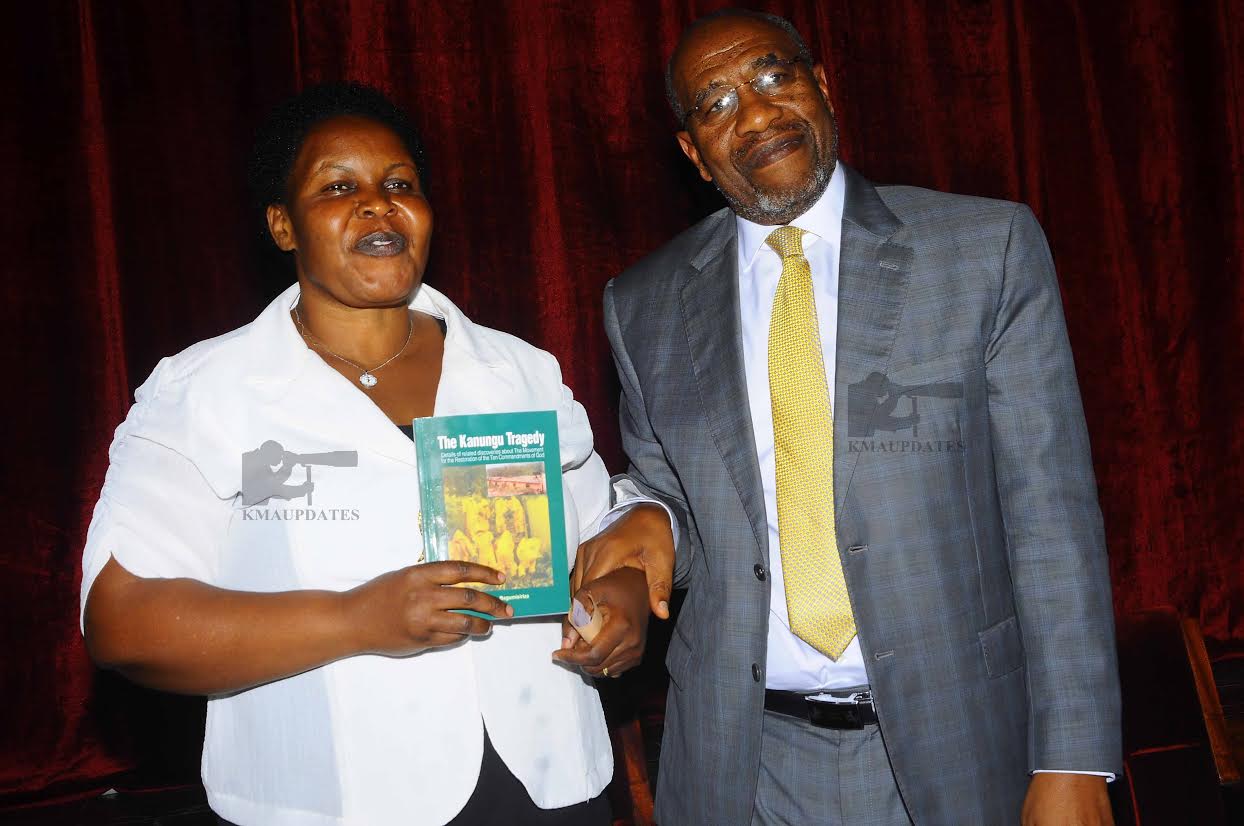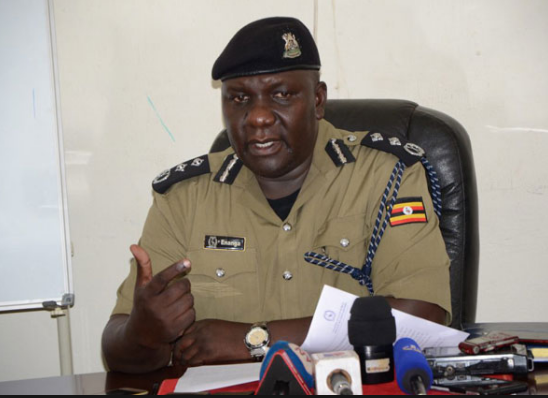Prime Minister Dr. Ruhakana Rugunda has expressed antagonism as to how Joseph Kibwetere managed to disguise his activities under his NGO that led to deaths of hundreds of innocent people in Kanungu district which subsequently forced the government to amend the NGO Act in the wake of the massacres.
Presiding over the launch of ‘The Kanungu tragedy’ a book authored by Fr Narcisio Bagumisiriza at Christ the King Church in Kampala over the weekend, Dr. Rugunda warned Ugandans to be very careful with the mushrooming religious cults and fake NGOs worried that what happened in Kanungu might happen again.
“Let us not take things for granted. What happened 16 years ago can still happen today. While we turn up for worship, keep a close eye of each other and activities of our leaders. Be vigilant so that masqueraders like Kibwetere can be exposed,” Dr Rugunda said.
“I urge the public to be more cautious about these false prophets because it was due to a false prophet that saw more than 1,000 people perish in fire in Kanungu in 2000,” warned Dr. Rugunda.
Fr Bagumisiriza’s book narrates the unwary death of followers of one of the modern churches in a firestorm duped to be ascending to heaven through burning fire.

The Kanungu Tragedy depicts the Movement for the Restoration of the Ten Commandments of God, a religious cult established in Kanungu District as a Non Governmental Organization allegedly accused of being behind the deaths of a thousand believers in an inferno in 2000.
The religious cult preached that the HIV/AIDS pandemic at the time that claimed thousands of lives in Uganda prior to finding of the drug was a signal to the end of the world. It then offered people “a spiritual alternative” of entering the golden gate.
In Uganda, there is a growing number of unchecked religious denominations coming up tapping believers from the renowned (traditional) religious institutions originally established by the first European and Muslim missionaries in the 18th and 19th centuries.
While the original houses of warship Catholic, Protestants and Moslems came with the objective of teaching people to read, write and embrace new skills, the modern denominations are courting followers to accent and believe in spiritual healings and establishing cult’s warship which have led to massive unsuspecting deaths.

On 17 March 2000 about 1000 people were burnt to death in Kanungu, Rukungiri (now Kanungu District. Those who were burnt belonged to a religious cult popularly known as Kibwetere cult, led by Joseph Kibwetere, Credonia Mwerinde, Angelina Mugisha, Fr. Joseph Kasapurari and Fr. Dominic Kataribabo.
During the launch of the book at Christ the King Church in Kampala, Fr Bagumisiriza told the audience that the whereabouts of Joseph Kibwetere, the mysterious leader of the cult, remain unsolved and it’s unclear whether he is dead or alive.
“He took advantage of HIV/AIDS that was a big problem in society to justify his argument that it was a punishment from God to sinners as the world would came to an end,”.
“During my research, I found out that some journals published wrong information insinuating that the Kanungu incident was suicide. The dead were set ablaze by Kibwetere. He had promised his flock that the world would end on December 31, 1999,” Fr Bagumisiriza said.

The Author flanked by Fr. Paul Irumba tasked the government to constantly keep close eye on the development and activities of various religious denominations and update intelligence agencies to avoid the repeat of such nasty incident.
A Parliamentary committee that probed the massacre ruled that there was laxity on the part of police because prior to the deaths, there was a complaint by residents that was neglected and not followed by the security agencies. Another report by Parliamentary Defense Committee indicated that the police, acting on a complaint from a citizen about dubious activities being carried out by the Joseph Kibwetere group, it was established that the sect claimed an NGO.
Preliminary investigations by the police at the time indicated that the killings were well planned by the cult leaders after it apparently became clear that the world was not going to come to an end at the turn of millennium. For instance, on March 24, two mass graves containing 153 bodies were found at a cult compound in Kalingo, 45 km to the west of Kanungu. Some had been dead for more than four months.
Background
The Movement for the Restoration of the Ten Commandments of God sprung up in the 1980s after breaking away from the mainstream Roman Catholic Church. The focus of the preaching by the group was that to avoid apocalypse [end of the world], believers had to strictly follow the Ten Commandments. Cult leaders preached that the world would come to an end in the year 2000.
Fr Dominic Kataribabo
The Cult leaders formerly a professed and ordained priest, of the Roman Catholic Church in Uganda Fr Dominic Kataribabo left the US in 1987, after obtaining a degree in religious studies from Loyola Marymount University, one of America’s top Roman Catholic colleges. Fr Kataribabo also had a degree from Makerere University and was Rector of Kitabi Seminary where he was known as a good Counsellor. Little is known about Angelina Mugisha, who was also among the cult leaders, According to a March 2000 BBC report,
Credonia Mwerinde
Born 1952 in Kanungu at Kateete, Nyabugoto, and Mwerinde was the high priestess and co-founder of the Movement for the Restoration of the Ten Commandments. She was born in a village where Kibwetere’s camp was located. Among the followers of the cult, she was referred to as the ‘programmer’. She is reported to have first contacted Kibwetere in 1989.
The local daily (New Vision) 16 years ago reported that in early 2000 that Kibwetere, the leader of the Movement for the Restoration of the Ten Commandments of God, wanted by the Police then for the murder of about 1,000 people in Kanungu died in July 1999, his wife has said. Theresa said Kibwetere died after a long mental illness on July 26, 1999 and was buried at night in a garden at Rugazi.
“I have evidence that my husband died on July 26, 1999 and was buried at night in a garden at Fr. Dominic Kataribaabo’s house in Rugazi, Bushenyi district,” she said. She said on Wednesday after the burial, the cult leaders planted sugar canes over the grave. “I know where my husband’s body is buried.
We are going to ask the Police to allow us to exhume the body for a decent burial here at home,” she said. Last year, Theresa told the Police that Kibwetere died with hundreds of other believers in the inferno in the cult’s church at Kanungu. She declined to discuss her earlier statement that her husband had written to her a letter and sent home his book days before the inferno. Theresa also refused to reveal the source of her fresh information.
“There were witnesses in Rugazi who can testify and point at the exact spot at which Kibwetere was buried. I will co-operate with the Police when the time comes to make sure that this mystery is resolved once and for all,” Theresa said. The regional criminal investigations officer, south-western, Terence Kinyera, said this new information would reinforce the investigations. A court warrant of arrest for Kibwetere and four other cult leaders’ stands.
Kanungu tragedy – March 17, 2000
At first it was assumed that the Kanungu massacre was mass suicide by the members of the cult who were convinced about going to heaven through fire but later it was established that it was planned and executed by the cult leadership.
The victims of the inferno included children too young to make independent decisions.
Before dust could settle after the Kanungu tragedy, it was discovered that many more people belonging to the same cult had died and been secretly buried in other camps outside Kanungu including Bushenyi and Buziga near Kampala.
By the end of March, the death toll of the cult members had risen to about 1000 people. The Kanungu tragedy and its aftermath invariably generated national and international concern.
The Cult’s Doctrine
The whole cult revolved around a belief that some people were talking with God through visions and had received warnings from the Blessed Virgin Mary about the end of the world by the year 2000 (apocalypse).
The followers were not supposed to go to hell if they strictly followed the cult (The Movement for the Restoration of the Ten Commandments of God).
For the devout Christians the whole concept of ‘okubonekyerwa’ (getting heavenly visions) was very appealing.
The cult talked of the doomsday. According to their former preacher, Martino Nuwagaba, they preached as far back as the Easter of 1992 about how on that “last day” snakes as big as wheels of tractors and big blocks of cement will fall from heaven onto the sinners.
They preached of three days of consecutive darkness that will engulf the whole world and how only their camps were supposed to be safe havens, something reminiscent of the biblical Noah’s Ark.
It is said that even sealing the church doors and windows by nail before setting the church on fire was to create that darkness situation that was a prelude to the apocalypse.
They promised their followers that when all this happened, everybody would perish except their followers and that whatever remained on earth would be theirs alone and that they would then start communicating directly with Jesus.
Followers believed in this so much so that they considered themselves the most privileged people on earth.
By Adams Sadiiki











